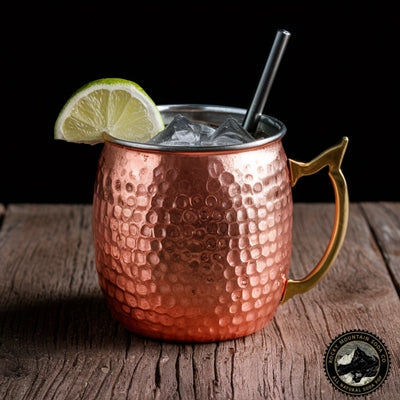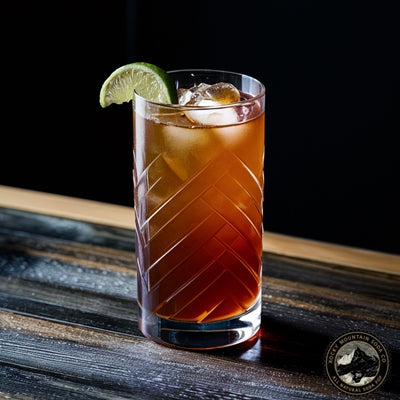
Ginger has been enlivening recipes for more than 5,000 years. For several thousand years, its use was confined mostly to China and parts of Southeast Asia, where it was first cultivated. During the Roman Empire, limited amounts of ginger began making its way to Europe, but getting it from Asia to Rome was extremely time-consuming and expensive. In the 11th century, the globally ambitious businessmen of Venice first established a route that went by boat through the Mediterranean, overland through the Middle East, and then once again by boat to India, Ceylon, Java, and other of the so-called "Spice Islands."
"With the establishment of a network of trade routes between Asia and the Medeterranean between the 15th and 17th centuries—known as the Silk Road—spices were more widely introduced to fascinated Europeans. As ginger became more widely available, it became more accessible for people to bake and experiment with."
—Mary Beth Albright, National Geographic
In the late 15th century, the Portuguese - responding to the disruption of the old Venetian route through the Middle East caused by the Muslim conquest of Constantinople - pioneered a water-only route around South Africa known as the Silk Road. Spice mania soon overtook Europe in the years that followed. Other countries then joined the Spice Trade, including the Spanish and British and, to a lesser extent, the French. And as spice flooded the day's kitchens and restaurants, some enterprising folks began to brew a new kind of beer from ginger.
Early Ginger Beer
It doesn't take more than a few minutes of searching on the internet to discover at least a half dozen competing claims about who was the first to brew true ginger beer from ginger, sugar, and water. If, however, you are persistent in your research like ournatural soda creators, a vague, somewhat pointillist image begins to take shape that enables you to get a foothold on the truth.
And that truth goes something like this: sometime in the early 17th century, folks in England began brewing ginger beer for themselves and their family and friends. No one knows exactly who came up with the idea or when. However, the evidence points to someone in Yorkshire in the early 1700s. From there, ginger beer's popularity spread, and by the 18th century, people in the British colonies of North America were trying their hand at brewing ginger beer. At the same time, the practice spread to South Africa, Canada, and Ireland.
In time, ginger beer became the craft brew of its day. During the 18th century and into the 19th century, it reached its peak popularity. It could be found in pubs throughout the UK and restaurants in almost every corner of the US (we've never had pubs, but that's another story). The alcohol content of ginger beer at this time varied and depended entirely on who was brewing it and their intended customers. But it was around 11% on average, meaning traditional ginger beer had some kick.
Non-Alcoholic Ginger Beer
While companies still brew alcoholic ginger beer, the more popular type these days has little to no alcohol in it. But how did that come to pass? After all, ginger beer was exactly as much an adult beverage as any other type of beer for at least a couple of hundred years. So how is it that people's tastes shifted so dramatically?
Turns out we can thank prohibition for that. The same prohibition that Joseph Kennedy Sr. took advantage of to make his fortune transporting bootlegged alcohol. During prohibition in 1920, people started manufacturing ginger beer using carbonated water to produce the fizz. Surprisingly, unlike non-alcoholic beer, non-alcoholic ginger beer (which still contained trace quantities of alcohol) was a reasonable success, and so when prohibition was finally lifted, most people did not make the shift back to "real" ginger beer and stuck with the quasi-soft-drink equivalent instead.
Why Is It Called "Ginger Beer" If It's Not Really Beer?
That has to do with how it's made. Making non-alcoholic ginger beer still involves aspects of brewing, but fizziness is added using forced carbonation rather than fermentation. Because of that, it clings to the ginger "beer" moniker and is distinctly different from ginger ale, which is just carbonated water with flavor and sweetener.
Ginger Beer vs. Ginger Ale
Most people are well aware that both ginger ale and ginger beer exist. They're both part of the culture and have been for centuries (at least in the case of ginger beer). But if you asked 100 people what is the difference between the two you would probably be greeted with dead silence from most people, and the rest would probably respond with something like: "Aren't they the same thing?"
The following table compares the basic characteristics of ginger ale and ginger beer.

| Attribute | Ginger Ale | Ginger Beer |
|---|---|---|
| Origin | Developed in mid-18th century Ireland | Originated in mid-17th century England |
| Flavor Profile | Mild, sweet, and slightly gingery | Strong, spicy, and robust ginger flavor |
| Alcohol Content | Typically non-alcoholic | Traditionally contains little-to-no alcohol (up to 0.5%) |
| Typical Ingredients | Carbonated water, sugar, ginger flavoring | Water, ginger, sugar, yeast |
| Appearance | Clear to light golden | Cloudy to opaque, often darker in color |
| Production Method | Produced using carbonated water and flavorings | Typically brewed and fermented similar to beer |
| Estimated Global Sales (2023) | $2.63 billion USD (Source) | $4.8 billion USD (Source) |
Different Uses of Ginger Beer and Ginger Ale
Ginger ale is a hugely popular soft drink that most people consume as-is to quench their thirst. Beyond that, however, it is also one of the most popular cocktail mixers around, added to cocktails to produce effervescence and sweetness. Ginger ale is also a popular ingredient in so-called "mocktails": beverages typically served in bars and restaurants that contain no alcohol.
Ginger beer is typically added to cocktails to provide a spicy edge. The more robust flavor of the ginger beer will hold its own against vodka and other liquors in a way ginger ale cannot. The Moscow Mule is a perfect example of that. If you ever tried to substitute ginger ale for ginger beer in a Mule cocktail you'd find out quickly that it just doesn't work.
Three Delicious Ginger Beer Cocktails To Make At Home
If you've picked up some of our Rocky Mountain Soda Co. Golden Ginger Beer, you're in for a treat. It's gluten-free, vegan, kosher, and contains no GMOs! And if you're a fan of mixed drinks, that treat will be extra sweet. Here are three popular cocktails that call for ginger beer.
Try these three simple cocktail recipes using Rocky Mountain Soda Co. Ginger Beer:
Moscow Mule
The Moscow Mule originated in Hollywood more than 80 years ago, and its popularity has gone through the roof over the past decade. While there are dozens of variations on the Mule, if you're new to this cocktail, we'd recommend starting with the iconic Moscow Mule recipe using a copper mug and the ingredients listed below.

Ingredients:
- 2 oz vodka
- 1/2 oz fresh lime juice
- 6 oz Rocky Mountain Soda Co. Golden Ginger Beer
- Lime wedge, for garnish
- Ice cubes
Instructions:
- Fill a copper mug or glass with ice cubes.
- Pour the vodka and fresh lime juice over the ice.
- Top up the glass with Rocky Mountain Soda Co. Golden Ginger Beer.
- Stir gently to combine.
- Garnish with a lime wedge and serve immediately.
Pimm's Cup
This thoroughly British cocktail is a big hit with All England Tennis Club patrons. It's vegan-friendly and great for those hot summer days on the backyard deck!

Ingredients:
- 2 oz Pimm's No. 1
- 1/2 oz fresh lemon juice
- 6 oz Rocky Mountain Soda Co. Golden Ginger Beer
- Cucumber slices, strawberry slices, and mint leaves for garnish
- Ice cubes
Instructions:
- Fill a highball glass with ice cubes.
- Pour the Pimm's No. 1 and fresh lemon juice over the ice.
- Top up the glass with Rocky Mountain Soda Co. Golden Ginger Beer.
- Stir gently to mix the ingredients.
- Garnish with cucumber, strawberry, and mint leaves.
- Serve immediately and enjoy the refreshing Pimm's Cup.
Dark And Stormy
A Dark and Stormy is similar to a Moscow Mule but uses a dark rum base instead of vodka, and you don't need a copper mug.

Ingredients:
- 2 oz dark rum
- 6 oz Rocky Mountain Soda Co. Golden Ginger Beer
- Lime wedge, for garnish
- Ice cubes
Instructions:
- Fill a highball glass with ice cubes.
- Pour the dark rum over the ice.
- Top up the glass with Rocky Mountain Soda Co. Golden Ginger Beer.
- Stir gently to combine.
- Garnish with a lime wedge.
- Serve immediately and enjoy the spicy sweetness of the Dark and Stormy.
These recipes should result in delicious cocktails that highlight the flavor of Rocky Mountain Soda Co. Ginger Beer. Cheers!
Order Golden Ginger Beer from Rocky Mountain Soda Co.
If you're looking for a ginger beer that also happens to be vegan, kosher, gluten-free, and contain no GMOs, you'll find it in our Golden Ginger Beer. As is the case with all of our natural soda brands, (including our delicious ginger ale), our Golden Ginger Beer is a thirst-quenching, lip-smacking treat you'll enjoy alone or mixed into your favorite cocktail.






